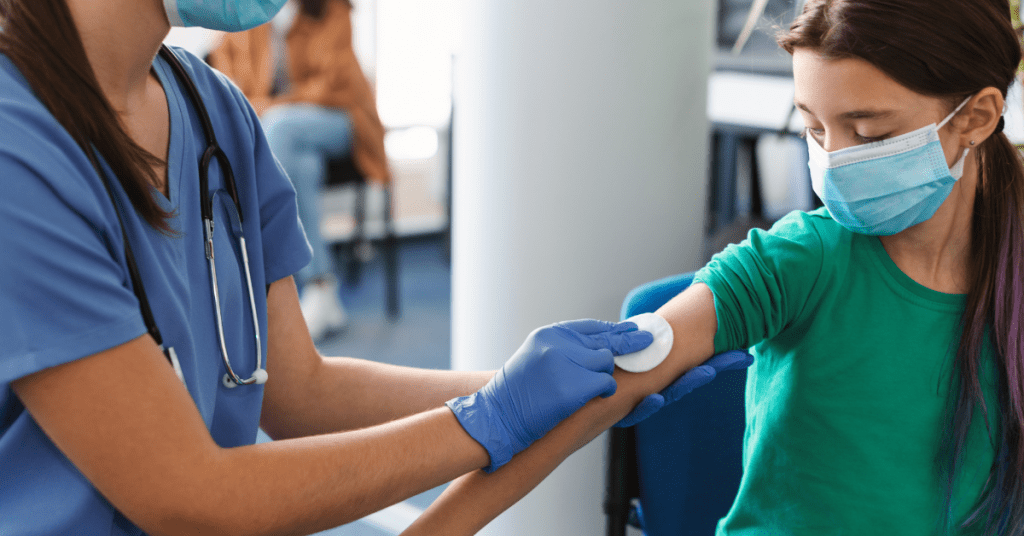In recent times, a respiratory virus called Human Metapneumovirus (HMPV) has started drawing attention due to an increasing number of cases being reported across India. Although it has been known to the medical community for a while, its impact is becoming more evident, particularly among vulnerable groups such as children, the elderly, and those with weakened immune systems. This trend has raised concerns among healthcare professionals and the general public alike, as it underscores the need for greater awareness and preparedness.
HMPV is not just another seasonal virus; its ability to cause severe respiratory illnesses in certain populations makes it a significant public health concern. The rise in cases also reflects broader issues, such as the aftermath of the COVID-19 pandemic, which has left many with weakened immunity to respiratory infections. Understanding the nature of HMPV—its symptoms, modes of transmission, and the groups it affects—is essential for individuals and communities to take effective preventive measures. Furthermore, exploring its implications for India’s healthcare infrastructure can help us gauge the challenges and potential solutions to mitigate its impact.
By examining the factors contributing to its spread and the steps needed to contain it, we can foster a more informed and proactive approach to addressing this emerging health threat.

What is HMPV?
HMPV, or Human Metapneumovirus, is a respiratory virus that was first identified in 2001. It belongs to the Pneumoviridae family, the same group of viruses as Respiratory Syncytial Virus (RSV). HMPV primarily affects the respiratory tract, causing symptoms similar to those of a common cold, flu, or even severe pneumonia in extreme cases.
Key Symptoms:
- Runny nose
- Cough
- Fever
- Shortness of breath
- Wheezing
- Fatigue
In severe cases, particularly among vulnerable groups, it can lead to bronchitis or pneumonia, necessitating hospitalization.
How Does HMPV Spread?
HMPV spreads in a manner similar to other respiratory viruses, such as influenza and the common cold. It is transmitted through:
- Respiratory droplets: When an infected person coughs or sneezes.
- Close contact: Such as shaking hands with someone who is infected.
- Contaminated surfaces: The virus can survive on surfaces, and touching these before touching your face can lead to infection.
Preventive measures like regular handwashing, wearing masks, and maintaining good respiratory hygiene are essential to reduce the spread.
The Current Situation in India
Over the past few months, there has been an increase in HMPV cases reported across various states in India. While the virus is not new, its rising prevalence has raised concerns among healthcare professionals. Several factors contribute to this increase:
- Post-Pandemic Immune Vulnerability: The COVID-19 pandemic disrupted regular exposure to viruses, leaving many people, especially children, with weaker immune defenses against respiratory infections.
- Improved Diagnostics: Increased awareness and better diagnostic tools have led to more cases being identified, which were previously misdiagnosed as common flu or RSV.
- Seasonal Surges: Like other respiratory viruses, HMPV cases tend to peak during colder months or in seasons when respiratory infections are more common.
Public Health Implications
The rise in HMPV cases in India poses several challenges for the public health system:
- Increased Burden on Healthcare Facilities: Hospitals and clinics are already grappling with seasonal flu cases, COVID-19, and other infections. The added burden of HMPV cases can strain resources, especially in rural areas where healthcare facilities are limited.
- Risk to Vulnerable Populations: Children under five, elderly individuals, and those with pre-existing conditions are at higher risk of severe complications. This calls for targeted awareness and vaccination strategies (if and when a vaccine becomes available).
- Economic Impact: Frequent hospital visits, medication costs, and lost productivity due to illness can place a financial strain on families and the economy.
Preventive Measures
To combat the spread of HMPV, public health authorities and individuals must adopt a proactive approach:
- Personal Hygiene:
- Wash hands frequently with soap and water.
- Use alcohol-based hand sanitizers when soap is unavailable.
- Avoid touching your face unnecessarily.
- Respiratory Etiquette:
- Cover your mouth and nose with a tissue or elbow when coughing or sneezing.
- Dispose of tissues immediately and wash hands afterward.
- Social Distancing:
- Maintain a safe distance from individuals showing symptoms of respiratory illness.
- Avoid crowded places during peak infection seasons.
- Vaccination Research: While there is currently no vaccine for HMPV, ongoing research could lead to a breakthrough. Until then, flu vaccines and other immunizations can help reduce the overall burden of respiratory illnesses.

Role of the Government and Health Authorities
The government and health organizations play a critical role in managing the HMPV surge:
- Awareness Campaigns: Educating the public about HMPV symptoms, transmission, and prevention through media, schools, and community programs.
- Strengthening Surveillance: Expanding diagnostic facilities and monitoring the spread of the virus to identify hotspots and take timely action.
- Improving Healthcare Access: Ensuring that rural and underserved areas have access to medical care, including proper facilities to diagnose and treat HMPV.
- Encouraging Research: Supporting research initiatives to develop vaccines and antiviral treatments for HMPV.
What Can You Do?
As individuals, we have a role in protecting ourselves and others from HMPV. Here are some practical steps:
- Stay Informed:
- Follow updates from credible sources about HMPV cases and prevention.
- Seek Medical Attention Early:
- If you or your loved ones show symptoms of severe respiratory illness, consult a doctor immediately.
- Avoid Self-Medication:
- Do not take antibiotics unless prescribed by a healthcare professional, as they do not work against viral infections like HMPV.
- Support Community Health Efforts:
- Participate in local health initiatives and encourage others to practice preventive measures.
The rising cases of HMPV in India are a wake-up call for both individuals and public health authorities. While the virus itself may not be new, its increasing prevalence highlights the need for vigilance, awareness, and robust healthcare systems. By adopting preventive measures, seeking timely medical care, and supporting public health initiatives, we can reduce the impact of HMPV on our communities. Let’s work together to stay informed and protect ourselves and our loved ones from this emerging threat.


